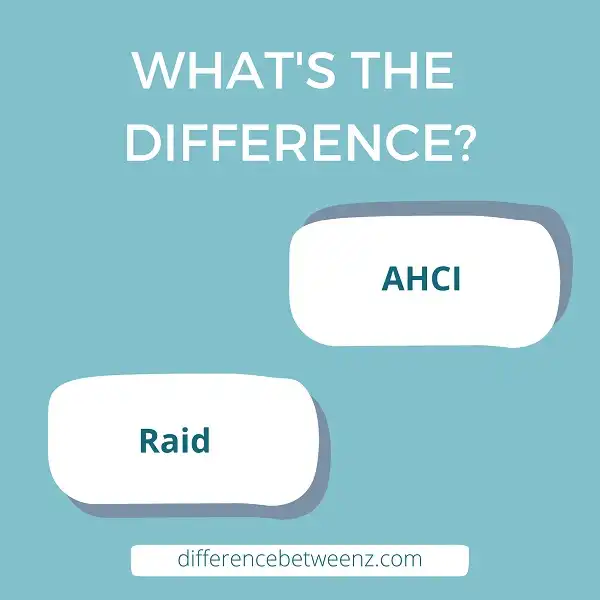When it comes to storage, there are a few options to choose from AHCI, Raid, or software Raid. But what’s the difference between them? And which one is the best for you? Here’s a breakdown of each one.
What is AHCI?
AHCI stands for Advanced Host Controller Interface. It is a specification that defines a hardware interface for host controllers in Serial ATA (SATA) systems. AHCI gives software developers and hardware designers a standard method for detecting, configuring, and programming SATA/ AHCI adapters. AHCI was first published in 2004 by Intel, which developed the interface specification as a way to unify the programming interface for SATA host controllers from different vendors. Today, AHCI is widely used in PCs, laptops, and servers. It is also supported by many Operating Systems, including Windows, Linux, and macOS. AHCI provides numerous benefits over the older IDE interface, including hot-plugging and Native Command Queuing (NCQ). AHCI is an essential part of the Serial ATA Specification and is required for all SATA systems.
What is Raid?
Raid is an acronym for “Redundant Array of Independent Disks.” It is a data storage virtualization technology that combines multiple physical disk drive components into a single logical unit for the purposes of data redundancy, performance improvement, or both. Raid is a hardware- or software-based solution used to create and manage raid arrays. Raid controllers are used to manage raid configurations and can be physical devices or software programs. Hardware-based raid controllers typically offer better performance than software-based solutions, but they are also more expensive. Raid 0, 1, 5, and 6 are the most common types of raid configurations. Raid 0 stripes data across multiple disks for improved performance. Raid 1 mirrors data across multiple disks for redundancy. Raid 5 stripes data and Parity information across multiple disks for improved performance and redundancy. Raid 6 also stripes data and Parity information across multiple disks but uses the second level of parity for even greater redundancy.
Difference between AHCI and Raid
AHCI (Advanced Host Controller Interface) and RAID (Redundant Array of Independent Disks) are two storage technologies that are often used interchangeably. However, there are some important distinctions between the two. AHCI is a bus interface that allows communication between the motherboard and SATA devices, while RAID is a data storage virtualization technology that combines multiple physical drives into a single logical unit. A key difference between AHCI and RAID is that AHCI provides enhanced functionality for SATA devices, while RAID improves data availability and performance by striping, mirroring, or parity. AHCI is typically used for a single hard drive, while RAID is often used for multiple drives. When choosing between AHCI and RAID, it is important to consider the specific needs of your storage system.
Conclusion
While both AHCI and RAID offer some benefits, RAID is the better option for most users. If you are looking to set up a system with multiple disks, we recommend using RAID instead of AHCI.


